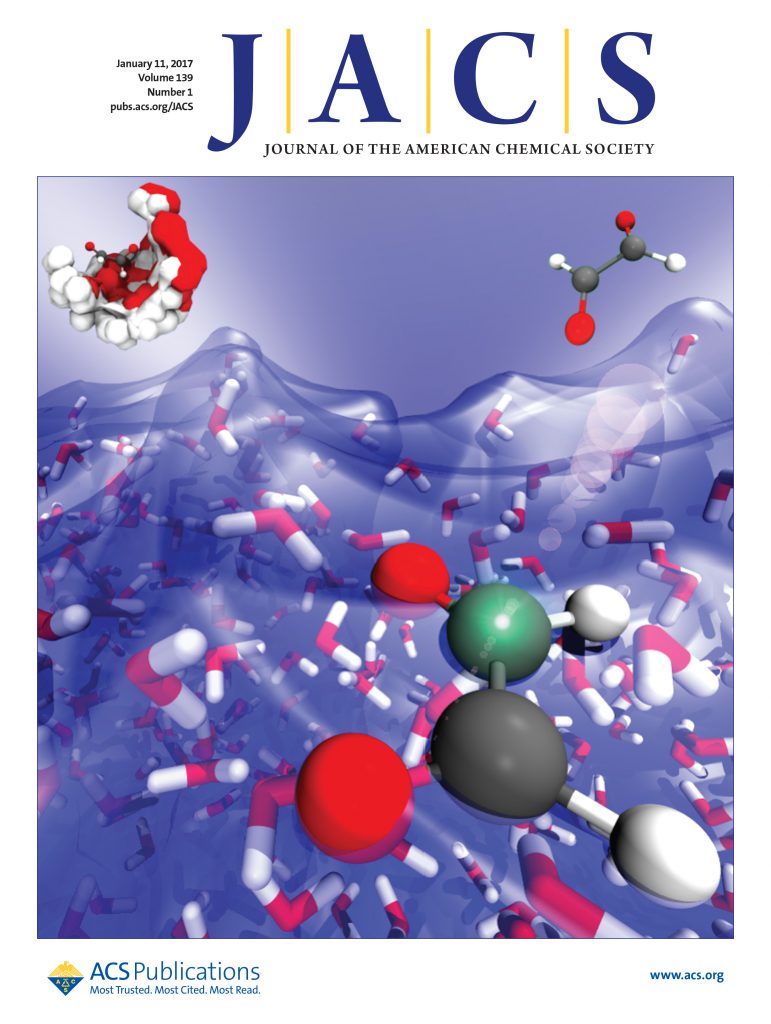Competitive Carbonate Binding Hinders Electrochemical CO2 Reduction to CO on Cu Surfaces at Low Overpotentials.
IF 15.6
1区 化学
Q1 CHEMISTRY, MULTIDISCIPLINARY
引用次数: 0
Abstract
The electrochemical reduction of CO2 to useful chemicals holds promise for a sustainable carbon cycle. However, the key factors that control the pathways to various desired products remain unresolved, partially due to the limited knowledge of reaction intermediates on the electrode surface. To address this, we utilize in situ electrochemical shell-isolated nanoparticle-enhanced Raman spectroscopy in combination with density functional theory calculation to examine the potential-dependent composition of adsorbed species during CO2 reduction on polycrystalline copper. The results reveal that carbonate anion adsorption outcompetes other carbon-containing species, including adsorbed CO2 activation intermediate *COO- and *CO, which has the effect of anodically shifting the onset potential of *CO formation in electrolyte solutions with a lower carbonate concentration. These results suggest that the competitive binding of carbonate impedes the reduction of CO2 on the Cu surface. Monte Carlo simulations show that both potential dependent electrode surface change and electrode-carbonate Coulomb interaction are key to understanding the competitive binding process. Our findings suggest that reducing the competitive binding of carbonate may be a promising route to improve the CO2 reduction on Cu electrodes at low overpotentials.在低过电位下,竞争性碳酸盐结合阻碍了Cu表面上CO2电化学还原为CO。
电化学将二氧化碳还原为有用的化学物质有望实现可持续的碳循环。然而,控制各种所需产物途径的关键因素仍未解决,部分原因是对电极表面反应中间体的了解有限。为了解决这个问题,我们利用原位电化学壳隔离纳米粒子增强拉曼光谱结合密度泛函理论计算来研究多晶铜在CO2还原过程中吸附物质的电位依赖组成。结果表明,碳酸盐阴离子的吸附优于其他含碳物质,包括吸附的CO2活化中间体*COO-和*CO,它们在较低碳酸盐浓度的电解质溶液中具有阳极转移*CO形成起始电位的作用。这些结果表明,碳酸盐的竞争性结合阻碍了Cu表面CO2的还原。蒙特卡罗模拟结果表明,电位依赖电极表面变化和电极-碳酸盐库仑相互作用是理解竞争结合过程的关键。我们的研究结果表明,减少碳酸盐的竞争结合可能是在低过电位下提高Cu电极上CO2还原的有希望的途径。
本文章由计算机程序翻译,如有差异,请以英文原文为准。
求助全文
约1分钟内获得全文
求助全文
来源期刊
CiteScore
24.40
自引率
6.00%
发文量
2398
审稿时长
1.6 months
期刊介绍:
The flagship journal of the American Chemical Society, known as the Journal of the American Chemical Society (JACS), has been a prestigious publication since its establishment in 1879. It holds a preeminent position in the field of chemistry and related interdisciplinary sciences. JACS is committed to disseminating cutting-edge research papers, covering a wide range of topics, and encompasses approximately 19,000 pages of Articles, Communications, and Perspectives annually. With a weekly publication frequency, JACS plays a vital role in advancing the field of chemistry by providing essential research.

 求助内容:
求助内容: 应助结果提醒方式:
应助结果提醒方式:


